These Stellar Wonders Include a Red Aurora and a Billowing Black Hole
A light show over Montana and an eruption snapped by a satellite feature among our picks for the week’s best space images
Black holes blow a mighty wind, red auroras light up a Montana landmark, a snow-covered volcano roars to life, and more in our picks for this week's best space-related images.
.
.
Black Hole Blows
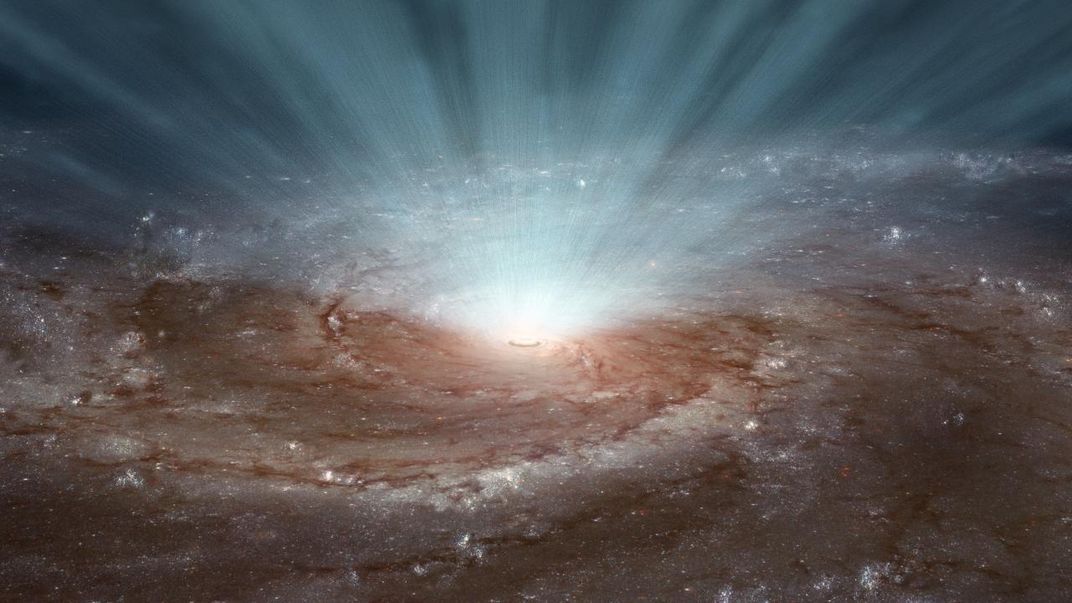
Mention black holes, and most people will picture one devouring all the matter around it. But when black holes feed, they are actually pretty sloppy, spitting out some of the in-falling debris via powerful winds of radiation. Now researchers have confirmed that these winds can have extremely far-reaching effects. Most mature galaxies have supermassive black holes at their cores. Using the combined forces of two X-ray telescopes, Emanuele Nardini of Keele University and colleagues studied the activity of a very bright galaxy with an active black hole called PDS 456. They found that its winds are blowing across most of the galaxy, which means they are probably pushing out the gases needed for new stars to form. In this way, the researchers think central black holes play a role in regulating the growth of their host galaxies.
Montana Aurora
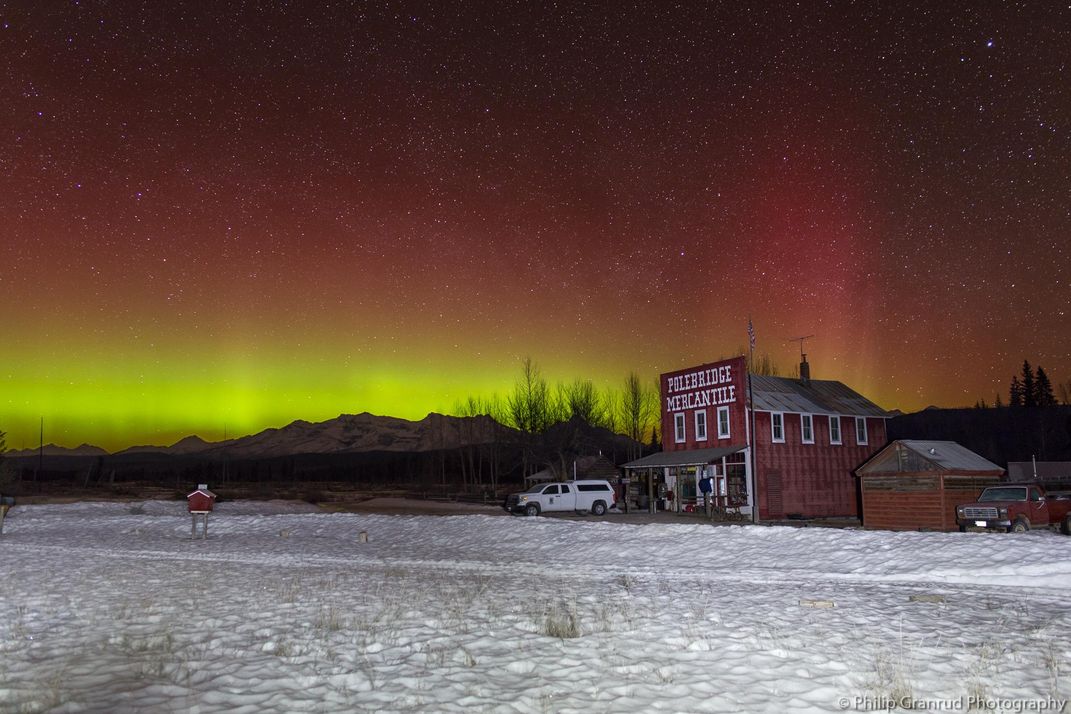
The skies were ablaze over northern Montana on February 18, thanks to a bright aurora display that was visible even beyond the Arctic Circle. At the time, Earth was passing through a stream of solar particles, which sparked the sky show as they collided with air molecules in our atmosphere. The main display was probably happening over Canada, which would have enjoyed views of the more common green ribbons of light, created when solar particles strike oxygen molecules lower in the atmosphere. But seeing the show from a distance, folks visiting Montana's Polebridge Mercantile could make out the brilliant reds of aurora activity much higher in the sky.
Frozen Volcano
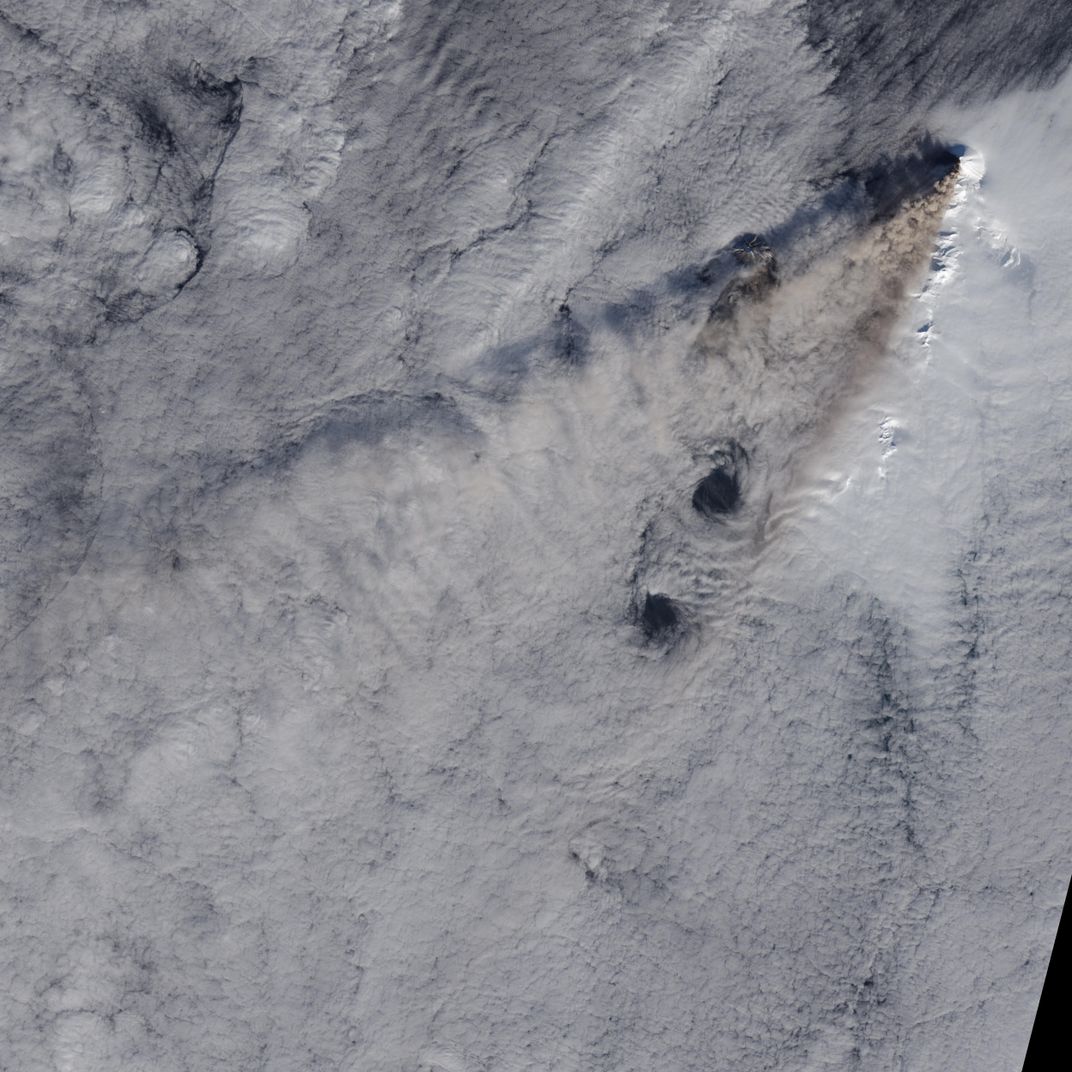
On February 16, a volcano in the Kuril Islands roared to life for the first time in seven years, spewing plumes of ash up to 25,000 feet high above the archipelago in the north Pacific. Captured in this image from Landsat 8, winds carried ash from the Chikurachi volcano about 170 miles westward over the snow-covered landscape. Despite being a hotbed of volcanic activity, the Kuril island chain is inhabited and has been at the center of a 60-year-old territory dispute between Japan and Russia. The islands stretch from the tip of Russia's Kamchatka peninsula to the top of Japan's island of Hokkaido, and both countries claim ownership of the four southernmost isles. According to the BBC, the unresolved tension is why Russia and Japan have not technically signed a peace treaty ending their involvement in World War II.
Dawn Approaches
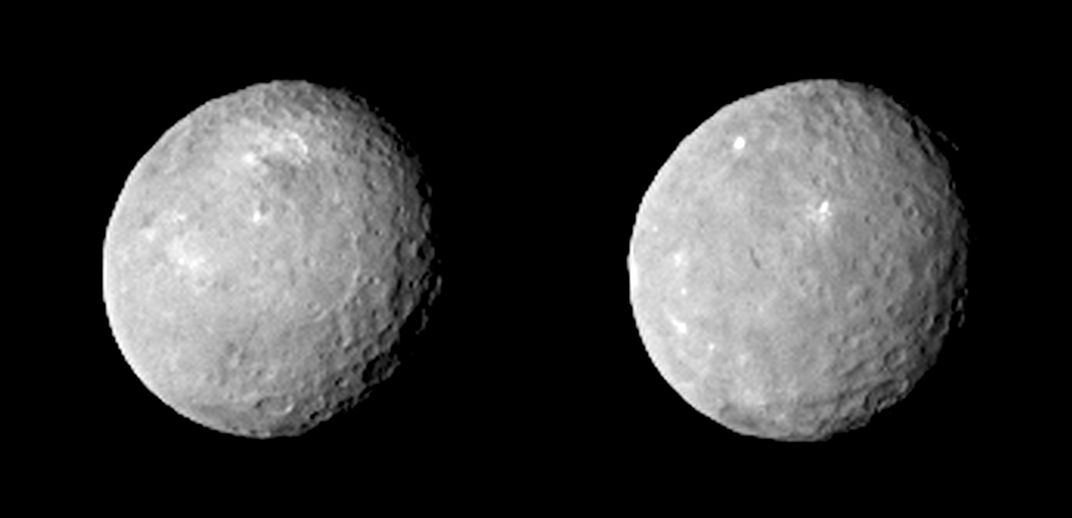
This is Ceres, the only official dwarf planet that resides in the main asteroid belt between Mars and Jupiter. Since September 2014, a NASA spacecraft called Dawn has been getting closer to the tiny target and is now providing even better images than what the Hubble Space Telescope can produce. These shots, taken on February 12, show two sides of Ceres as the object rotates, revealing craters and a scattering of bright spots that have astronomers puzzled. Dawn should start orbiting Ceres on March 6, and its close-up views will hopefully resolve the mystery.
Dark Merger
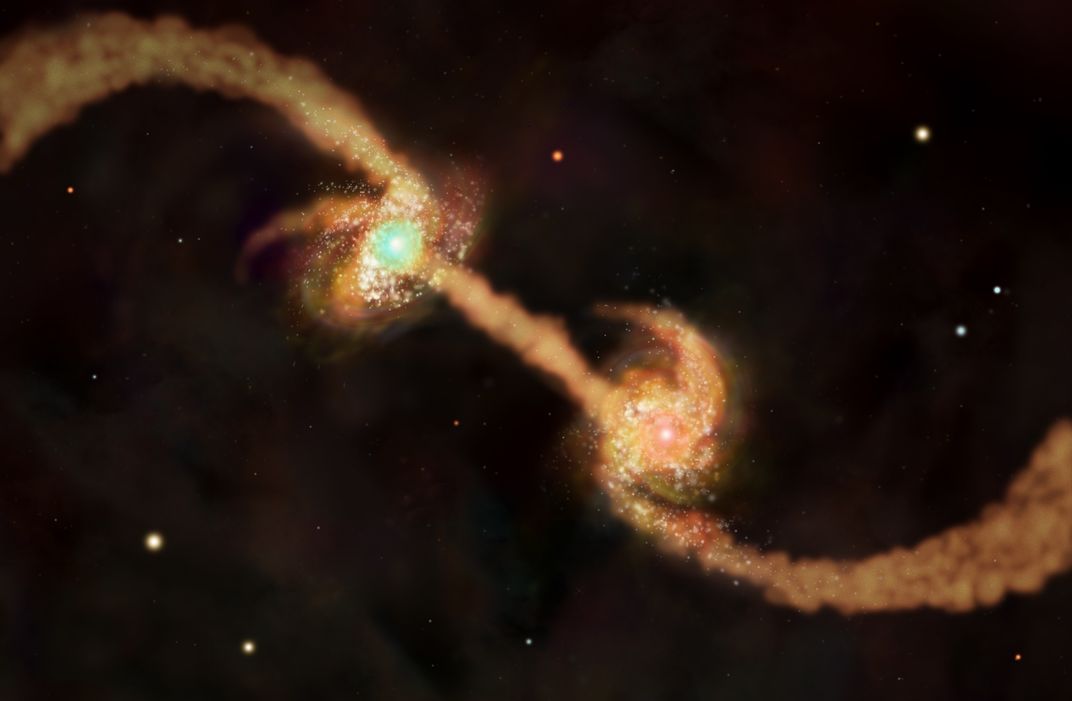
Perhaps fittingly, it seems dark matter plays a guiding role in helping supermassive black holes grow. Galaxies have supermassive black holes at their centers, and many astronomers thought the size of that black hole must be linked to the number of stars in the galaxy. But galaxies are also embedded in haloes of invisible dark matter, which outweighs all their visible matter, and it's been unclear how dark matter might affect the equation. Now Akos Bogdan of the Harvard-Smithsonian Center for Astrophysics and his colleagues have weighed the black holes and dark matter haloes of 3,000 elliptical galaxies—groupings of stars that look more like footballs than the elegant spiral of our Milky Way. They found a tight relationship between the two, suggesting that it's darkness, not light, that governs a black hole's size. This may be related to the way elliptical galaxies form—via the merger of two smaller galaxies, like the ones seen in this illustration. When two galaxies become one, the dark matter halo grows, setting a galaxy-wide "gravitational blueprint" that somehow triggers the black hole to bulk up.